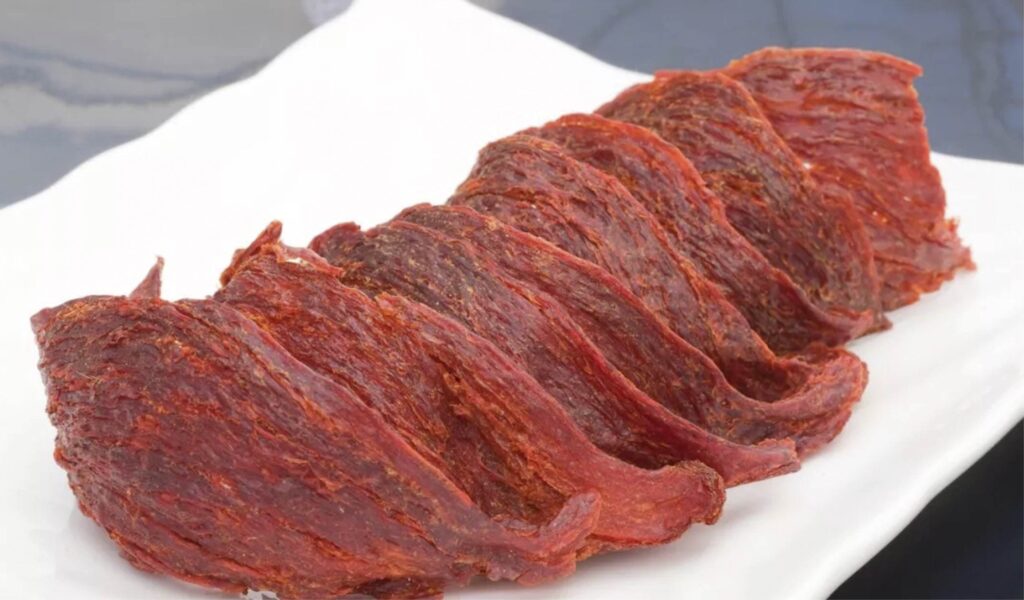News, PRODUCT CONSULTATION
Instructions for Preparing Blood Nest Properly, Preserving All Nutrients
**Instructions for Preparing Blood Bird’s Nest Properly: Preserving All Nutrients**
Blood bird’s nest, a variant of the renowned bird’s nest, is prized for its unique reddish color and supposed superior nutritional benefits. It is among the most expensive and sought-after varieties in the market due to its rarity and purported health advantages, including boosting the immune system, improving skin health, and enhancing vitality. However, to maximize its nutritional value, proper preparation is essential. Incorrect handling can result in the loss of nutrients or, worse, cause contamination.
In this comprehensive guide, we will provide detailed instructions on how to properly prepare blood bird’s nest, ensuring that you preserve all its valuable nutrients. This guide will cover everything from selecting high-quality nests, cleaning, soaking, and cooking them, to storage tips to retain freshness.
### 1. Understanding Blood Bird’s Nest: What Is It?
Blood bird’s nest is a type of bird’s nest that has a distinctive reddish hue, often thought to be due to the bird’s diet or the minerals absorbed from the cave walls where the nests are built. However, there are also concerns that some blood nests are artificially colored to enhance their appearance. Thus, it’s important to buy from reputable sources to ensure authenticity.
#### Key Nutrients in Blood Bird’s Nest
Blood bird’s nests are known for being rich in:
– **Glycoproteins**: Essential for cell repair and regeneration.
– **Amino acids**: Such as cysteine, which helps in detoxifying the body.
– **Sialic acid**: Supports the immune system and brain function.
– **Collagen**: Enhances skin elasticity and slows aging.
### 2. Choosing High-Quality Blood Bird’s Nest
Before preparing bird’s nest, it is crucial to select the right product. Here’s what to look for:
– **Authenticity**: Ensure that the blood bird’s nest is naturally colored. Artificially dyed nests can be harmful and are less nutritious.
– **Cleanliness**: High-quality nests have fewer impurities and feathers. Choose nests that are less processed to retain their nutrients.
– **Texture and Structure**: A genuine bird’s nest should have a firm, slightly elastic texture. It should not crumble easily.
### 3. Essential Tools and Ingredients
Before starting, gather the following tools and ingredients:
**Tools**:
– Clean bowl
– Fine-mesh strainer
– Ceramic pot or double boiler (for cooking)
– Food-grade tongs or tweezers (for removing impurities)
– Filtered water
**Ingredients**:
– Blood bird’s nest (2-3 pieces, depending on the number of servings)
– Filtered water
– Optional: rock sugar, dried longan, red dates, goji berries
### 4. Step-by-Step Instructions for Preparing Blood Bird’s Nest
#### Step 1: Cleaning the Bird’s Nest
1. **Inspect the nest**: Gently examine the bird’s nest for impurities, such as feathers or dirt.
2. **Soak in water**: Place the nest in a bowl of filtered water. Let it soak for about 2-4 hours, depending on its thickness and dryness. This will soften the nest and make it easier to clean.
3. **Rinse and separate**: After soaking, the nest should expand and become soft. Rinse it gently under running water.
4. **Remove impurities**: Use tweezers to carefully remove any remaining feathers or dirt. Be gentle to avoid breaking the delicate fibers.
#### Step 2: Soaking the Bird’s Nest for Rehydration
1. **Resoak if necessary**: If the nest is still not fully softened after the initial soak, let it soak for an additional hour or two.
2. **Drain and rinse**: Once the nest is fully expanded and softened, drain the water using a fine-mesh strainer and rinse it again to remove any residual impurities.
3. **Cut or tear into pieces** (optional): For easier cooking, you can tear the softened nest into smaller pieces.
#### Step 3: Cooking the Bird’s Nest
Cooking bird’s nest properly is crucial to preserving its delicate nutrients. Here’s how to do it:
1. **Prepare a double boiler**: Using a double boiler or a ceramic pot is recommended, as it ensures gentle heat that won’t destroy the nutrients.
2. **Add water**: Pour filtered water into the ceramic pot (about 2 cups for every piece of bird’s nest).
3. **Add the soaked bird’s nest**: Place the cleaned bird’s nest into the pot. Do not overfill with water, as this can dilute the nutrients.
4. **Add optional ingredients**: For added flavor, you can include rock sugar, dried longan, or red dates. These ingredients enhance the taste without overpowering the natural flavor of the bird’s nest.
5. **Slow cook**: Heat the pot on low heat. Allow the bird’s nest to simmer gently for 30-45 minutes. Avoid boiling it, as high temperatures can degrade its nutrients.
6. **Check consistency**: The bird’s nest is ready when it has a gelatinous, slightly chewy texture. It should not be mushy or overly soft.
#### Step 4: Serving the Bird’s Nest
1. **Cool slightly**: Allow the cooked bird’s nest to cool for a few minutes before serving. This preserves the delicate flavor and prevents burns.
2. **Serve in a bowl**: Spoon the bird’s nest into serving bowls and enjoy it warm or chilled.
3. **Optional garnish**: You can add a few goji berries or a drizzle of honey for added sweetness and nutritional benefits.
### 5. Storing and Preserving Bird’s Nest
Proper storage is crucial to maintain the quality of bird’s nest:
– **Dry Storage**: If you have raw, unsoaked bird’s nests, store them in an airtight container in a cool, dry place. Keep them away from direct sunlight and humidity.
– **Refrigeration**: Soaked but uncooked nests can be stored in the refrigerator for up to 3 days. Place them in a container filled with filtered water and change the water daily.
– **Freezing**: For longer storage, cooked bird’s nests can be frozen. Store in small, airtight containers and freeze for up to 1 month. Thaw in the refrigerator before reheating.
### 6. Common Mistakes to Avoid When Preparing Bird’s Nest
1. **Using Tap Water**: Always use filtered or bottled water to avoid chlorine and other impurities that can affect the taste and nutritional value.
2. **Overcooking**: Bird’s nests are delicate. Cooking them at high heat or for too long can destroy the beneficial compounds.
3. **Adding Too Many Ingredients**: While it’s tempting to enhance the flavor with various additives, overloading with ingredients can mask the natural taste and reduce its health benefits.
4. **Skipping the Cleaning Step**: Even if the nest looks clean, always soak and rinse to ensure there are no hidden impurities.
### 7. Health Benefits of Properly Prepared Blood Bird’s Nest
Consuming blood bird’s nest that is properly prepared can offer a wide range of health benefits:
– **Immune System Boost**: The high glycoprotein content strengthens the immune system, helping the body resist infections.
– **Skin Rejuvenation**: Rich in collagen, bird’s nest helps improve skin elasticity, reduce wrinkles, and promote a youthful appearance.
– **Digestive Health**: It is gentle on the stomach and can improve digestion, making it an ideal food for the elderly or those with weak digestive systems.
– **Energy Enhancement**: Regular consumption can boost energy levels, improve focus, and reduce fatigue.
### 8. FAQs on Preparing and Consuming Bird’s Nest
**Q1: How often should I eat bird’s nest to see benefits?**
It is recommended to consume bird’s nest 2-3 times per week for optimal health benefits.
**Q2: Can I prepare bird’s nest using a slow cooker?**
Yes, a slow cooker set to low heat is a good alternative to a double boiler. Cook for about 1.5 to 2 hours on low.
**Q3: Is it safe to eat bird’s nest during pregnancy?**
Yes, bird’s nest is often recommended during pregnancy for its high nutrient content. However, consult with a healthcare professional before adding it to your diet.
### 9. Conclusion: Embracing the Full Potential of Blood Bird’s Nest
Preparing blood bird’s nest properly is an art that requires patience and attention to detail. By following the steps outlined in this guide, you can ensure that you are preserving all the valuable nutrients and enjoying the full range of health benefits this delicacy has to offer. Remember, the key to maximizing the benefits lies in selecting a high-quality product, preparing it with care, and storing it properly.
Ultimately, blood bird’s nest is a unique and nutritious food that, when prepared correctly, can be a wonderful addition to a healthy diet. Enjoy it in moderation as part of a balanced lifestyle to reap its long-term health benefits.

